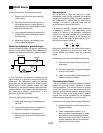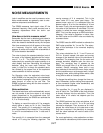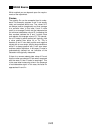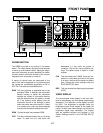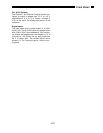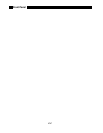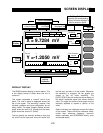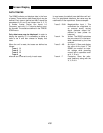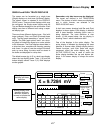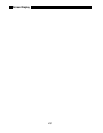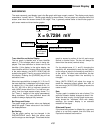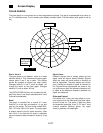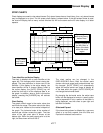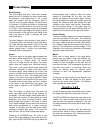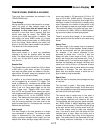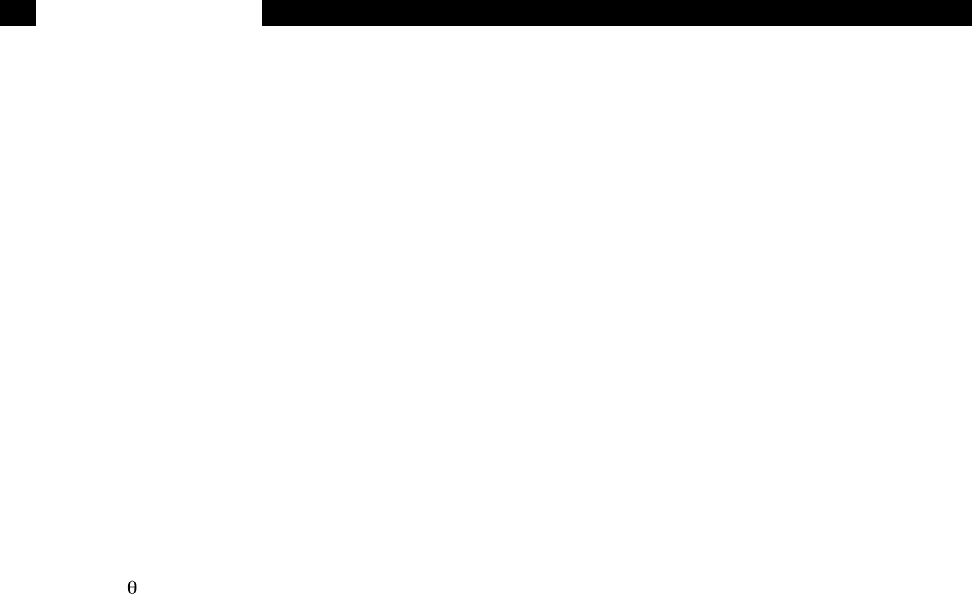
4-6
Screen Display
DATA TRACES
The SR850 collects and displays data in the form
of traces. There are four data traces which may be
defined. Each trace is defined as A•B/C where the
parameters A, B, and C are chosen from X, Y, R,
θ, Xnoise, Ynoise, Rnoise, Aux Inputs 1-4,
Frequency, and unity (1). C can also be any quan-
tity squared. The traces are defined in the TRACE/
SCAN menu.
Only data traces may be displayed. In order to
display the quantity X, it is necessary to define a
trace to be X and then choose to display that
trace.
When the unit is reset, the traces are defined as
follows:
Trace 1 X
Trace 2 Y
Trace 3 R
Trace 4
where B and C are set to unity in each case.
In most cases, the default trace definitions will suf-
fice. For specialized situations, the traces may be
redefined to fit the experiment. Some examples:
Trace 3 R/AI1 Magnitude/Aux Input 1. This
normalizes the magnitude to
an external slowly varying
signal. (detector output nor-
malized to laser power for
instance.)
Trace 4 Xn Xnoise. The SR850 calculates
the rms noise of X in the band-
width determined by the time
constant.
Trace 3 AI3 Aux Input 3. Store and display
the value of Aux Input 3. The
SR850 can monitor an exter-
nal voltage while recording
normal lock-in quantities such
as X, Y, R or θ.
Trace 4 F Frequency. Store the refer-
ence frequency along with the
X, Y, R or θ.



